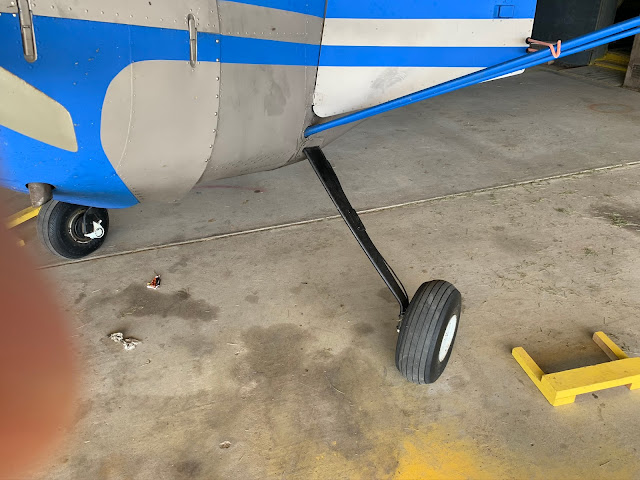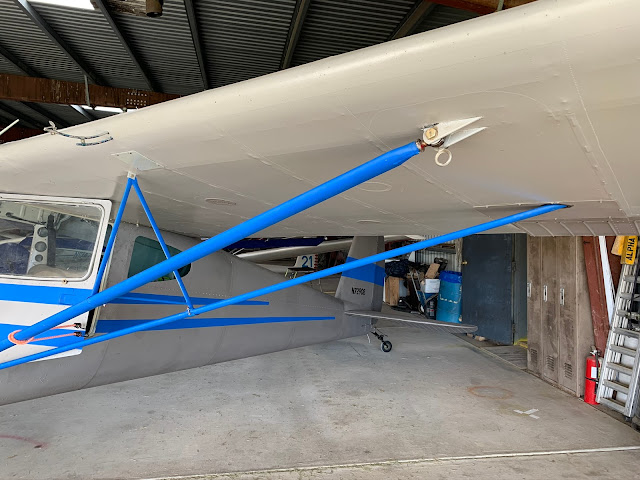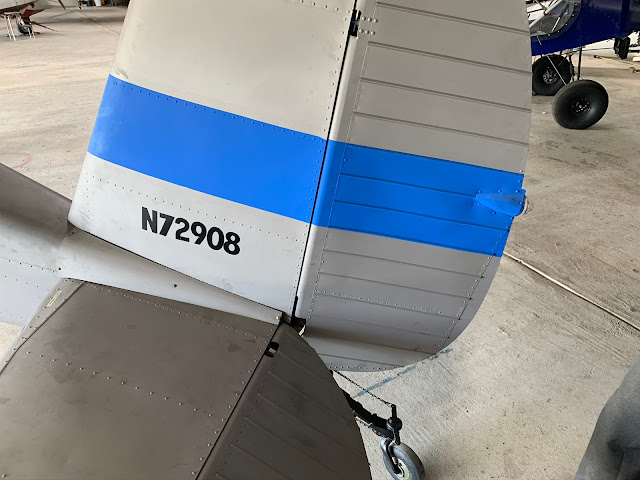I am so pleased to report that my airplane and design N318KW Chipper 2 had its first flight! All squawks and paperwork were cleared; taxi tests were just fine, along with successful high speed taxi tests.
Monday, October 18, 2021
First Flight of Chipper 2, N318KW!
Wednesday, October 13, 2021
Is it possible for an Airspeed (ASI), Vertical Speed (VSI) and Altimeter, all in one Instrument?
How can I save money, time and panel space when shopping instruments for my airplane? Can I get an Airspeed (ASI), Vertical Speed (VSI) and Altimeter, all in one?
The answer is yes. We're posting a short video on our Multi-Function Instrument, which combines all three functions into one brilliant lightweight display. As I mention in the video, this instrument is superior because:
The speed ranges are customizable, including the green, yellow (caution) and red (redline) range for your airplane. You can set it up in knots or MPH. You also get a moving short term history of your airspeed, which is really useful for seeing how you're doing on your aircraft pitch stability.
Aircraft Spruce usually has it on sale. You can find it here:
BELITE RADIANT MFI (ASI / VSI / ALTITUDE) | Aircraft Spruce
and you can see our video, where I quickly describe its features, on Youtube:
Saturday, August 22, 2020
3 views of Chipper Single Seat 2021 Engineering Doodles
Monday, August 17, 2020
61 year old gets Biannual Flight Review in 74 year old airplane with Mr. Cessna
It's so good to be back, talking about building, flying and adventure.
I'm James Wiebe. I've done a lot and seen a lot, but I'm just a kid at 61, looking forward to another 30+ years of fun.
The photo illustration for the Blog header is my pilot blogbooks, both of which were damaged in the fire which put Chipper Aerospace under for the last 15 months. My desire to design, build and fly has come back, and it's great!
Today's post: The Biannual Flight Review (BFR). It was administered by Charles Pate. Charles is a young 82, and he worked for Cessna in piston aircraft engineering for more than 50 years, so anything you want to know from the factory perspective concerning Cessna 120's through a Cessna 310, he's the man. He can tell you about how marketing drove a bunch of engineering decisions. His history is officially Above Average.
Speaking of the C120, that's what my BFR was in. This particular plane was built in 1946, making it a very pleasant 74 years old and doesn't have flaps. We did a preflight tour of the plane, with Charles providing engineering and marketing commentary on various parts. The order of the following photos isn't correct, but it doesn't matter.
I had a wonderful time. I can still aviate, and I had some really sweet landings. The takeoff performance was extraordinarily anemic compared to a Chipper 2 or any of the Polini powered ultralights I've been designed, but flight manners were very gentle and landings were a slippin' Jimmy breeze. ("Better Call Saul" - a fun digression!) And finally, the ground manners were slightly less straight tracking than my Chipper 2. YMMV.
Enjoy the photos, with pieces of commentary. If I got anything wrong in the captions, the fault is mine in translation, not Charles. He is an encyclopedia of Cessna everything.
 |
| Air Vent tube, evolved into similar vents on C172 and other later Cessna aircraft. |
 |
| Rudder Pedals, these castings showed up in other Cessnas as well, for instance, the C310. |
 |
| Tapered shaft design with steel coupling. Engine changed to an integrated flange later (in O200, for instance.) |
 |
| This aircraft was owned early on by University of California, Davis, as a flight trainer. Lots of fixed cuts and scrapes early in its life. Cracks here and there too. Maintenance never stops. |
 |
| Landing gear, wheels, brakes. These were Goodyear brakes, hard to service. |
 |
| Pitot tube and static tube, with attached mud dawber stopper. Later on, the external static port was eliminated, as it had little difference on this slow airplane design. |
 |
| The tie down rings were an option. Washout on the wingform adjusted via the eyebolts. |
 |
| Tail skins are corrugated 0.016" aluminum. Hmm, that's the thickness I'm using for a lot of Chipper Single Seat stuff. |
 |
| Another view of the elevator. No aerodynamic or ballast counterweights whatsoever. |
 |
| Simple panel. Starter knob connects to huge starter / contact via a bowden cable. There is no electrical system in the aircraft. |
 |
| Charles checks the oil? |
 |
| Yeah!!!! First flight for me since May of 2019. |
 |
| The guys who worked at Cessna were farmers in 1946. They used tractor parts, and the fuel selector valve is one of them. Note it is not intuitive: Left, Right, Off as shown. |





